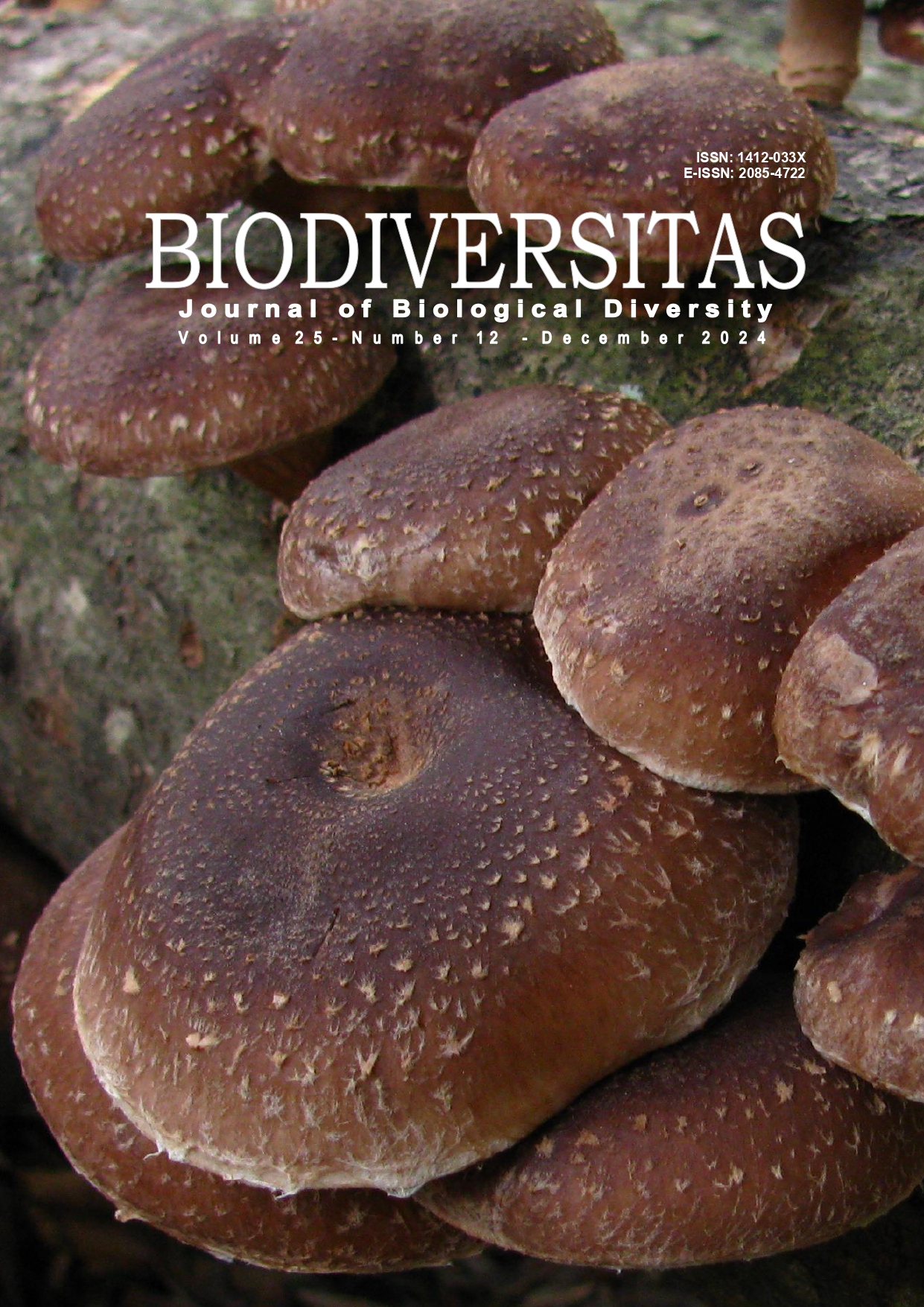Exploring the benefit of arbuscular mycorrhizal Glomus spp. in improving available soil P and crop growth of sorghum cultivated on ex-coal mine soil
##plugins.themes.bootstrap3.article.main##
Abstract
Abstract. Prasetya B, Arfiyanti H, Arfarita N. 2024. Exploring the benefit of arbuscular mycorrhizal Glomus spp. in improving available soil P and crop growth of sorghum cultivated on ex-coal mine soil. Biodiversitas 25: 5112-5122. One main problem of ex-coal mining land is low soil phosphate (P) availability and easy binding of phosphate to Fe and Al (hydro)oxide. These conditions affect the abundance and activity of soil microorganisms. Unlike other microbes, mycorrhizae can help root uptake of P that is not available in the inorganic form and make it available for crops. The addition of slow-release phosphate sources - such as rock phosphate, bone meal, and fish meal - are good sources of P nutrients because they are not easily fixed and washed away. This study aimed to improve ex-coal mining land conditions by increasing the level of P availability in soil via the application of various P sources at different dosages to improve mycorrhizal spores and sorghum growth. The pot experiment used a factorial completely randomized block design (CRBD) with 3 different phosphate source type (P), consisting of 3 treatment levels, under the optimum concentration of - P1: rock phosphate; P2: bone meal; and P3: fish meal - and various dose of phosphate source (F) consisting of 5 treatment levels - F0: control; F1: 0.17 g/polybag; F2: 0.29 g/polybag; F3: 0.40 g/polybag; and F4: 0.57 g/polybag-with a total combination of 15 treatments with 4 replications. The combination of the P2F3 treatment (bone meal dose of 0.40 g/polybag) was the best dose. It was effective in increasing the number of Arbuscular Mycorrhizae (AM) spores by 273 and increasing soil available P by 28.24 mg/kg. The P1F4 (natural phosphate with 0.57 g polybag-1) was the best treatment and produced the greater fresh weight and dry weight biomass of sorghum at about 31.86 g and 10.47 g, respectively. The plant height was increased by 5 to 35%, but there was no effect on the number of sorghum leaves.

